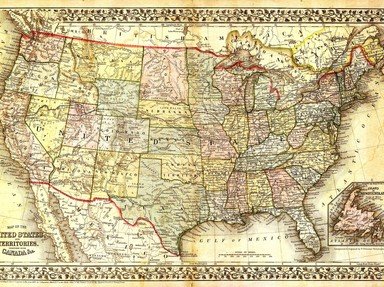Quiz Answer Key and Fun Facts
1. Which Texas leader known as the "father of Anglo Texas" was arrested in 1834 and taken to prison in Mexico City? When he was released he was more supportive of revolution.
2. An 1835 disturbance in Anahuac, a town near Galveston Bay on the route from Louisiana, is considered a prelude to the Texas Revolution. What was the topic of the dispute?
3. General Martin Perfecto de Cos was a commander of Mexican forces during the 1830s. He is presumed to be a close relative of which other famous figure in the Texas Revolution?
4. The first official battle of the Texas Revolution was fought in Gonzales and gave rise to the famous "Come and Take It" rallying cry and flag. What item were the Mexican troops trying to come and take?
5. Following the Gonzales engagement which heralded the start of the Texas Revolution, the Texians marched on which city?
6. Once the Texan Army arrived at San Antonio de Béxar, they recognized they were outgunned and outmanned. What strategy did they adopt?
7. In the siege of San Antonio de Béxar, Jim Bowie led a small detachment to intercept a mule train that was reported approaching the city accompanied by Mexican soldiers. What surprising thing did they find in the mules' saddlebags?
8. What did the Texians call the provisional government that met in 1835 and 1836 as a prelude to the Texas Revolution?
9. Which Texas leader, who later had a large city named for him, was chosen to lead the Provisional Army of Texas?
10. Following the siege of San Antonio de Béxar, the Texians finally attacked the Mexican garrison. What building was the stronghold of Mexican forces?
Source: Author
pusdoc
This quiz was reviewed by FunTrivia editor
gtho4 before going online.
Any errors found in FunTrivia content are routinely corrected through our feedback system.
